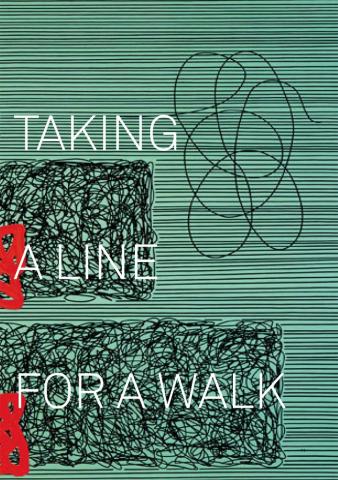* All prices inc. VAT, plus shipping costs
Taking a Line for a Walk
Cat. Zentrum Paul Klee
Exhibition catalogue, ed. by Fabienne Eggelhöfer
texts (German/English) by Régine Bonnefoit, Martina Dobbe, Fabienne Eggelhöfer
192 p with 130 coloured illustrations
320 x 245 mm, hardcover
ISBN 978-3-86442-072-6
Between Concept and Spontaneity
In Modern times, script, characters and calligraphy have been areas in which artists have been able to choose between spontaneity and control and between intuition and rule in their work, and to explore the spaces in between. This publication on the exhibition at Zentrum Paul Klee in Bern now brings together the relevant script works by Paul Klee with works by Henri Michaux, Mark Tobey, Brice Marden, Cy Twombly, Olav Christopher Jenssen, Christopher Wool and Jonathan Lasker. When writing his anthology “Creative Confession” in 1920, Paul Klee defined the “line” as “movement of a point”, and saw letters as well as drawing as being based on this line. And thus, in his abstract works, he created cipher-like line shapes in a free style using letters from the Latin alphabet and scripts from Arabic, Chinese or Japanese calligraphy with hieroglyphs and similar symbols. In 1931 he developed an “abstract script” even on the horizontal lines of a drawing. Under the effects of mescaline, Henri Michaux, who was 20 years his junior, also worked on an abstract script in his drawings, for which he referred specifically to Klee in his 1954 poem “Aventures des lignes” in the foreword of a Klee treatise. Like Klee, Mark Tobey and Brice Marden also oriented their work on Asian calligraphy. Tobey, who also studied Far-Eastern philosophy intensely, also developed a fantasy script, which, however, moved freely within the image space. Brice Marden, on the other hand, used the calligraphic grid, dissolved the strict structure of the characters and allowed them to flow into one another. While the works that emerged in the 1950s predominantly explored the dividing line between characters and free lines, with Cy Twombly it is not clear whether his script-like characters lie in front of the script or have already passed through the script and become unreadable. In contrast, Olav Christopher Jenssen shortened palindromes to their first letters, allowed them to become part of the painting process and thus operated within the dividing line between construction and deconstruction. Christopher Wool, on the other hand, used stencils to spray letters onto canvases and contrasted the deliberately chosen compositions with the spontaneity of graffiti. Finally, Jonathan Lasker transferred scriptural characters to the canvas using a pastose painting style, thus raising the question of what exactly drawing and painting are anyway.
Exhibition:
Zentrum Paul Klee, Bern, 16/4–17/8/2014






























